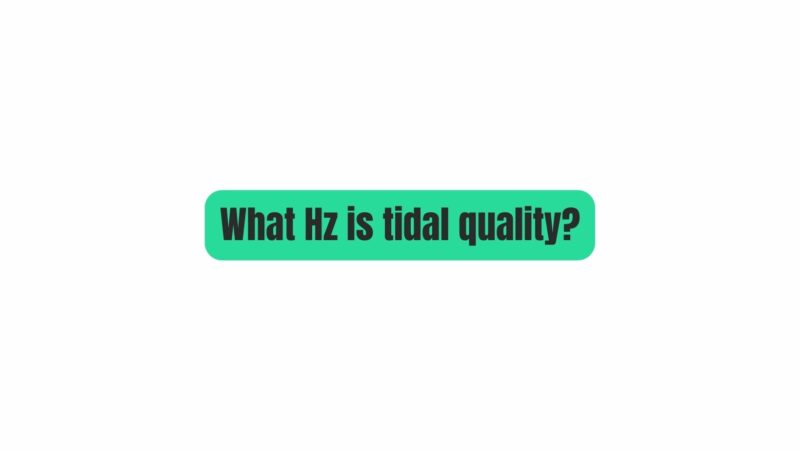Tidal, the music streaming service known for its unwavering commitment to audio quality, has garnered a loyal following among audiophiles and music connoisseurs. When it comes to assessing audio quality, one crucial aspect to consider is the sampling rate, typically measured in Hertz (Hz). In this comprehensive article, we will explore Tidal’s sound quality and specifically address the sampling rate—Hz—that defines Tidal’s audio quality across its various streaming tiers.
Understanding Sampling Rate in Digital Audio:
Sampling rate is a fundamental parameter that determines the quality and accuracy of digital audio. It represents the number of samples taken per second from an analog audio signal to convert it into a digital format. A higher sampling rate means more samples are taken, which can capture more audio detail, especially in high-frequency sounds. Common sampling rates in digital audio include 44.1kHz, 48kHz, 96kHz, and 192kHz.
Tidal’s Sound Quality Tiers:
Tidal offers a range of sound quality tiers, each designed to cater to different listener preferences and network conditions. These tiers determine the streaming quality and, by extension, the sampling rate that listeners can expect:
- Standard Quality: Tidal’s standard quality tier provides music at a bitrate of 96kbps (AAC codec) for mobile devices and 160kbps (AAC codec) for desktop listening. This tier is suitable for users with limited data plans or slower internet connections. It typically adheres to a sampling rate of 44.1kHz.
- High Quality: Tidal’s high-quality tier offers streaming at a bitrate of 320kbps (AAC codec). This setting strikes a balance between audio quality and data usage, making it a popular choice for most listeners. Similar to the standard quality tier, the high-quality tier commonly employs a sampling rate of 44.1kHz.
- HiFi Quality: Tidal’s HiFi tier is where the platform truly excels in audio quality. It provides music streaming at a bitrate of 1411kbps using lossless FLAC (Free Lossless Audio Codec) compression, equivalent to CD quality (16-bit/44.1kHz) in terms of sampling rate. The 44.1kHz sampling rate ensures that listeners experience music as it is traditionally heard on CDs.
- Master Quality: Tidal’s Master Quality tier represents the pinnacle of sound quality on the platform. It offers streaming at bitrates that often surpass CD quality, reaching into the high-resolution audio realm. While the exact sampling rate can vary depending on the track and format, it may include rates like 44.1kHz, 48kHz, or even higher for specific high-resolution audio formats like MQA (Master Quality Authenticated).
Sampling Rates in Tidal’s Sound Quality:
Tidal’s focus on delivering high-quality audio is evident through its various sound quality tiers. However, when it comes to sampling rates, Tidal primarily adheres to the industry-standard rate of 44.1kHz for CD-quality audio in its HiFi tier. The Master Quality tier may include higher sampling rates for tracks that support high-resolution audio formats, but these can vary.
Conclusion:
Tidal’s sound quality tiers, from standard quality to Master Quality, provide listeners with a range of audio experiences to suit their preferences and equipment capabilities. While the specific sampling rate (in Hz) may vary depending on the tier and the track being streamed, Tidal typically maintains a standard of 44.1kHz for CD-quality audio in its HiFi tier. For most listeners, this sampling rate delivers an exceptional audio experience, ensuring that music is faithfully reproduced as it is traditionally heard on CDs.

